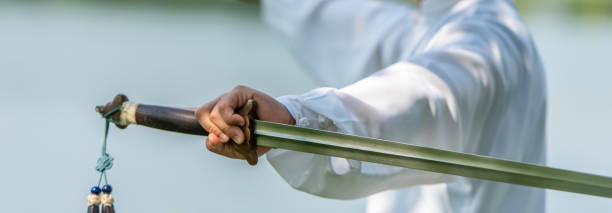During the Late Middle Ages, swords were sturdy and heavy, designed to pierce chain mail and break armor.
However, with the gradual disappearance of full suits of armor in the Renaissance, a new need arose: light, agile swords, adapted to duels and urban self-defense.
This change gave rise to two distinct but related weapons: the rapier and the rapier.
Often confused, these swords represent two distinct moments in the evolution of Renaissance fencing.
In this article we explore in detail the transition from the medieval sword to them .

From the medieval sword to the rapier:
A weapon for precision
With the arrival of the Renaissance, personal confrontations did not occur so much on the battlefield, but rather in civilian settings, such as streets and salons.
From the year 1500, the Renaissance rapier appeared, a sword designed for thrusting rather than cutting.
With a long, narrow blade, with a rhombus or hexagonal section, the rapier was perfect for piercing tissue or unprotected points of the body.
It was mainly used in duels between knights, nobles and bourgeois educated in fencing schools.
The rapier was a symbol of skill, refinement and social position, far removed from the military use of its predecessor.

A sword for lovers of history and fencing:
The German rapier of the 17th century
The 17th-century German rapier is not just a combat tool, but a historical testament.
It tells of a time when dueling was a matter of honor, technique trumped brute force, and swords were both weapons and symbols of culture and elegance.

Rapier and estoque: essential differences
Although often used synonymously, estoque and rapier (also called ropera in Spain) are not exactly the same.
Both emerged in the Renaissance context, but present technical and chronological differences:
-
The rapier (from the French estoc and the Italian stocco ) appeared earlier, around the beginning of the 16th century.
It is simpler in design, with a less elaborate guard and primarily oriented towards the thrust, although some models retained a certain lateral edge. -
The rapier, which emerged at the end of the 16th century and became popular during the 17th century, is a more refined evolution of the rapier.
Its blade is even thinner and longer, designed almost exclusively for thrusting. Furthermore, its guard is much more complex, with rings, loops, and protective bars that encircle the hand, characteristic of German and Italian models of the period.
The term "rapier" is more common in English and German, while in Spain it became popular as a rapier, worn with street clothes.
Both were used for dueling and self-defense, but the rapier represents the culmination in the evolution of single-handed civilian swords.

Our 17th century German rapier
The 17th-century German rapier is not just a combat tool, but a historical testament. It speaks to a time when dueling was a matter of honor, technique trumped brute force, and swords were both weapons and symbols of culture and elegance.
The replica available at the Medieval Shop is a rigorous reconstruction of a 17th-century German rapier, designed for collectors, reenactors, and practitioners of historical fencing.
It is made of EN45 carbon steel, a highly resistant and flexible material. Although it is not rust-proof, it is easy to maintain with regular lubrication.
Its blade has a diamond section, which provides great rigidity and excellent penetration capacity.
It measures 92 cm including the ricasso (blank area next to the guard), and 88 cm without it.
The balance is carefully calculated, with the center of gravity 6.5 cm from the crosshead, ensuring optimal maneuverability.
The 21cm handle has a wooden core wrapped with alternating copper and steel wires, ensuring a secure and comfortable grip.
The guard and pommel are crafted from mild steel and brass, offering hand protection and an elegant appearance.
The set weighs just 1.1 kg (1.3 kg with sheath), making it ideal for light fencing.
It includes a wooden scabbard covered in black leather, with metal trim that protects and decorates it.
In addition, we offer excellent value for a piece of this type.
Whether you are a historical fencer, a collector, or a Renaissance enthusiast, this replica offers a window into the past.
Its precision, beauty, and historical accuracy make it a must-have for anyone who wants to experience what a 17th-century swordsman felt like.









